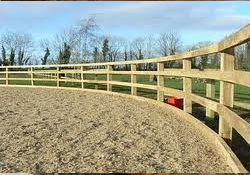Fencing planning requires thinking about a few different elements. The five elements of fencing planning are style, materials, regulations, installation and future maintenance. The information in this article pertains to residential fencing planning. There are different rules and purposes for agricultural and commercial fencing planning.

Fence Styles and Materials
There are so many styles of fencing on the market; making the right choice is not easy. Besides aesthetics, you want to choose a fence style according to the purpose for which you need it. In residential fencing planning, people usually want a fence that will provide privacy. Other people choose a fence in order to keep their pets and children safe.
And just like the style, there is a huge assortment of materials you can select for your fence. When it comes to wood fences, cedar and pine reign as the two popular champs. Look for wood fencing that has been pressure treated in order to reduce the material's breakdown rate. However, you will still need to seal and paint or stain the wood in order to extend the material's lifespan. Of course, if you choose a split-rail fence, you will need one made of harder wood like hemlock or locust.
If you want to go the metal fence route, chain-link is the most common choice. All pieces of a chain-link fence are crafted from galvanized metal, which is ideal for preventing rust. Although it is not the most attractive option, it is a cheap one. And if you want to further weatherproof the fence, and make it look better, you can coat it with a vinyl paint.
Fencing Regulations
During the fencing planning stages, you must know what the rules and regulations are as set by the HOA, or Home Owner's Association. If there is no HOA in your neighborhood, inquire with your municipality's government body. You may need to go through a permitting process. This process is common in order to get written approval. In some cases, you will be required to submit a Property Plat. And before you dig, be sure to contact the local utility companies so they can mark underground gas and water lines.
When It Is Time to Install a Fence
Now that the first three fencing planning stages are complete, you can install your fence. If you are using the services of a contractor, be sure they have years of experience. They should also possess the appropriate state licensure and be bonded and insured. Request a written estimate that includes information such as installation methods, dimensions and materials. All reputable fencing installers will provide limited warranties for materials and labor.
Consider the Future Maintenance
The final fencing planning stage involves future maintenance. Even if your cedar or pine fence has been pressure treated, you will still need to seal the wood after the fence is installed. Experts recommend that a fence be restained or repainted every two years. If your fence is made of a synthetic material or metal, like chain-link, you do not have to perform any maintenance. However, you do need to periodically inspect the fence for wear and tear.
